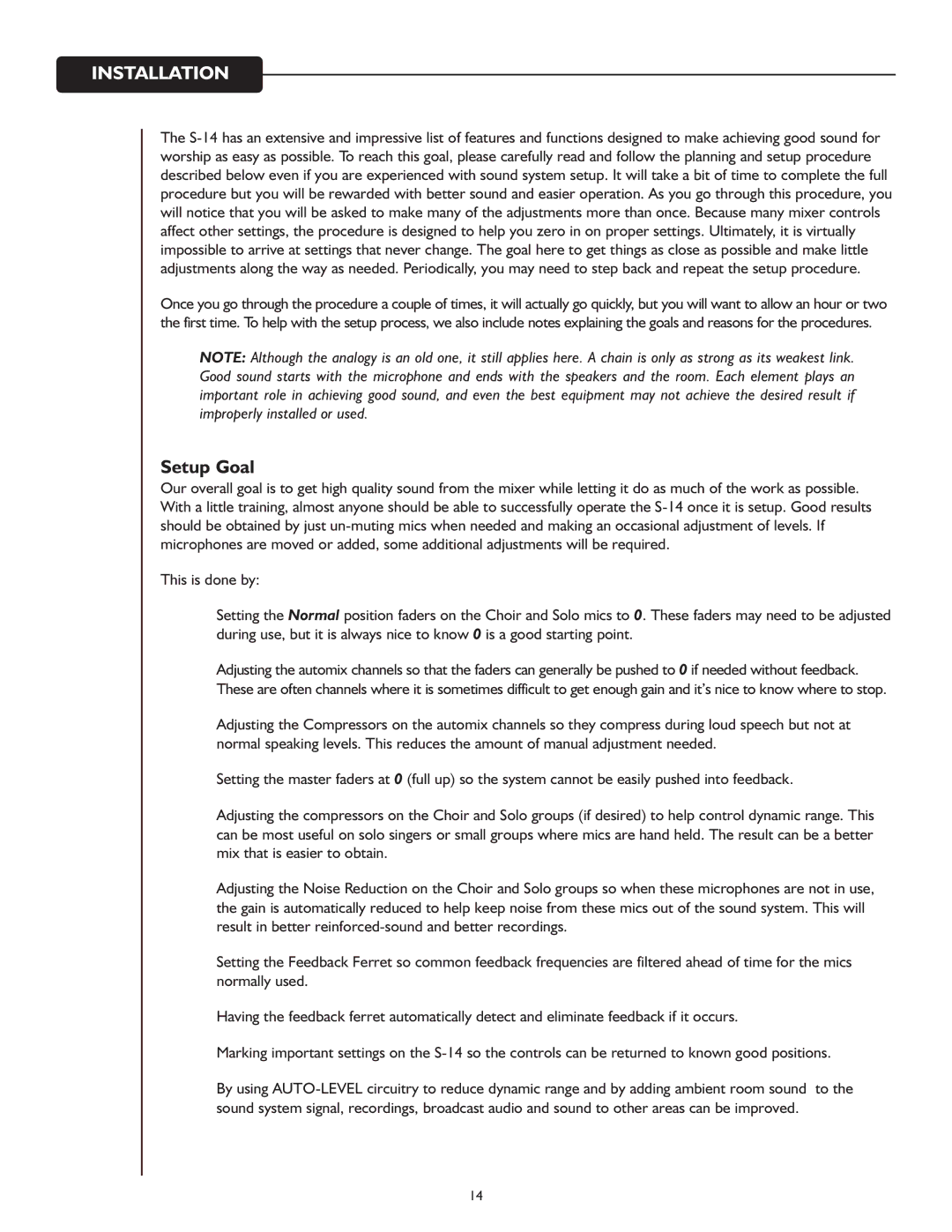
INSTALLATION
The
Once you go through the procedure a couple of times, it will actually go quickly, but you will want to allow an hour or two the first time. To help with the setup process, we also include notes explaining the goals and reasons for the procedures.
NOTE: Although the analogy is an old one, it still applies here. A chain is only as strong as its weakest link. Good sound starts with the microphone and ends with the speakers and the room. Each element plays an important role in achieving good sound, and even the best equipment may not achieve the desired result if improperly installed or used.
Setup Goal
Our overall goal is to get high quality sound from the mixer while letting it do as much of the work as possible. With a little training, almost anyone should be able to successfully operate the
This is done by:
➧Setting the Normal position faders on the Choir and Solo mics to 0. These faders may need to be adjusted during use, but it is always nice to know 0 is a good starting point.
➧Adjusting the automix channels so that the faders can generally be pushed to 0 if needed without feedback. These are often channels where it is sometimes difficult to get enough gain and it’s nice to know where to stop.
➧Adjusting the Compressors on the automix channels so they compress during loud speech but not at normal speaking levels. This reduces the amount of manual adjustment needed.
➧Setting the master faders at 0 (full up) so the system cannot be easily pushed into feedback.
➧Adjusting the compressors on the Choir and Solo groups (if desired) to help control dynamic range. This can be most useful on solo singers or small groups where mics are hand held. The result can be a better mix that is easier to obtain.
➧Adjusting the Noise Reduction on the Choir and Solo groups so when these microphones are not in use, the gain is automatically reduced to help keep noise from these mics out of the sound system. This will result in better
➧Setting the Feedback Ferret so common feedback frequencies are filtered ahead of time for the mics normally used.
➧Having the feedback ferret automatically detect and eliminate feedback if it occurs.
➧Marking important settings on the
➧By using
14
